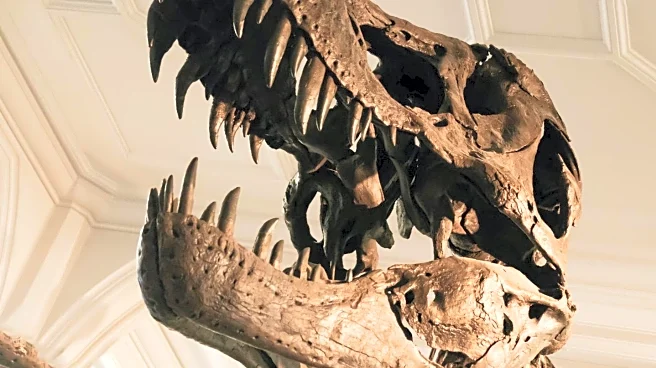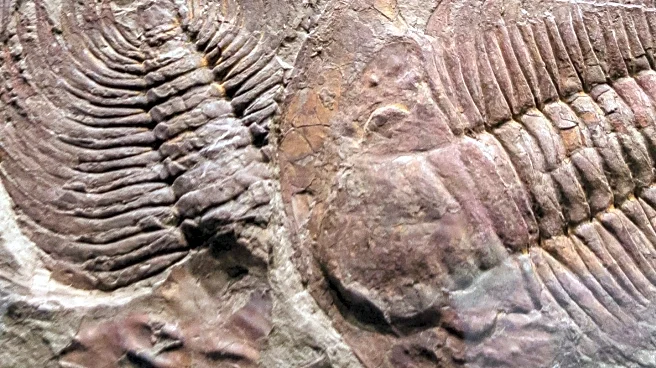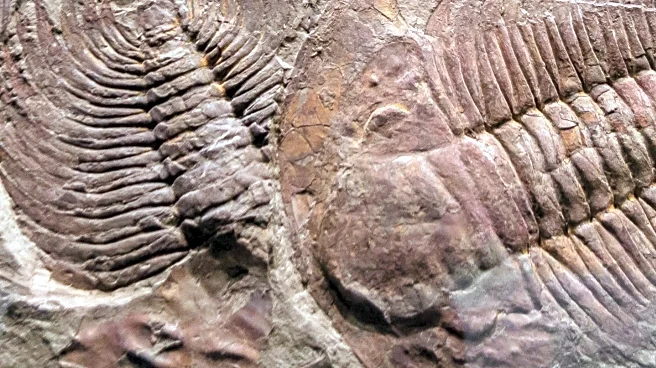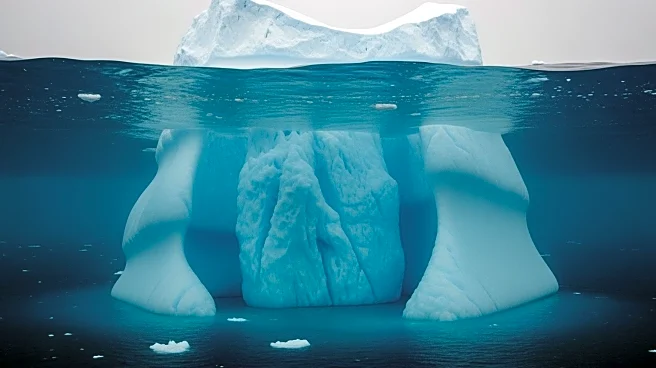What's Happening?
The Swindon Museum and Art Gallery has unveiled a new temporary fossil exhibition featuring the backbone of the first scientifically discovered stegosaur. This fossil, originally found in Swindon in the 1800s,
was acquired by the museum earlier this year. The exhibition, curated by Elaine Arthurs, focuses on Swindon during the Jurassic period, approximately 150 million years ago. It includes a variety of marine fossils, such as ammonites and a large pliosaur backbone, often referred to as 'sea monsters' due to their size. The stegosaur fossil was initially discovered in the 1870s in a clay pit in Swindon and was subsequently taken to the Natural History Museum in London, where most of its remains are still displayed. The exhibition aims to highlight the rich fossil history beneath Swindon, which was once submerged under subtropical waters.
Why It's Important?
This exhibition is significant as it showcases a crucial piece of paleontological history, the first identified stegosaur, providing insights into the prehistoric era of Swindon. It underscores the area's importance as a site for Victorian fossil hunters and contributes to the understanding of the region's geological past. The display of such fossils can enhance public interest in paleontology and natural history, potentially boosting local tourism and educational opportunities. Additionally, it raises questions about the historical geography of the area, such as how land-dwelling dinosaurs like the stegosaur ended up in marine environments, offering a platform for further scientific inquiry and discussion.
What's Next?
The exhibition, titled 'Fossils Hunters: Unlocking Swindon's Jurassic Past,' will be open to the public until April 11, 2026. It is expected to attract visitors interested in natural history and paleontology. The museum may continue to explore and acquire additional fossils to expand its collection and exhibitions. This could lead to further collaborations with other institutions, such as the Natural History Museum in London, to share resources and knowledge. The exhibition may also inspire educational programs and workshops aimed at engaging the community and fostering a deeper appreciation for the region's prehistoric heritage.
Beyond the Headlines
The exhibition not only highlights the scientific significance of the stegosaur fossil but also touches on broader themes of historical climate change and geological transformations. The presence of marine fossils in what is now a landlocked area illustrates the dynamic nature of Earth's history, where sea levels and climates have shifted dramatically over millions of years. This context can provide valuable lessons for understanding current environmental changes and the long-term impacts of climate shifts. Additionally, the exhibition serves as a reminder of the importance of preserving and studying natural history artifacts, which can offer insights into the planet's past and inform future conservation efforts.












